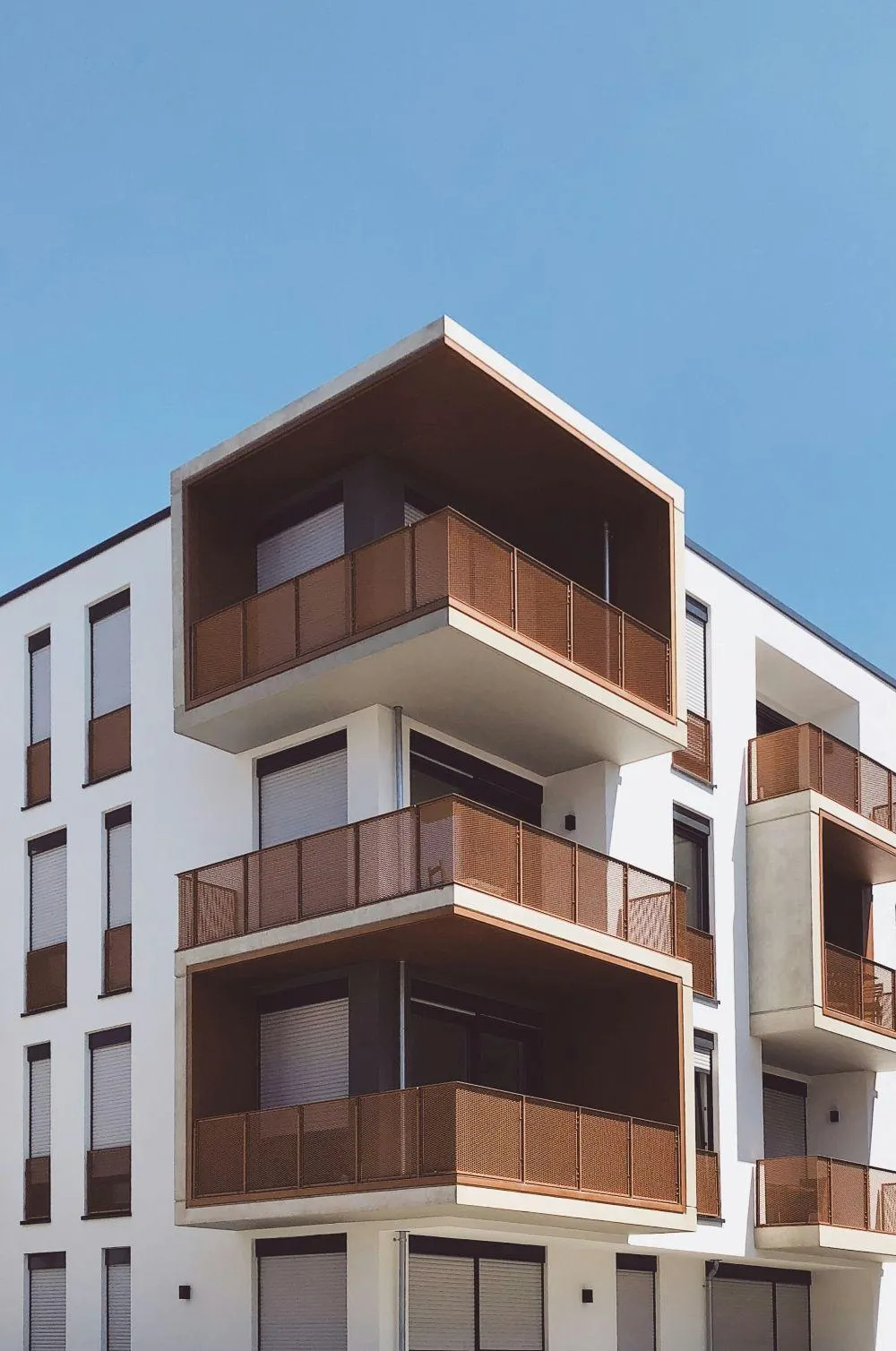
Project Management Secrets for Home Renovation Success
Successfully managing a home improvement project requires more than just vision—it takes structure, planning, and a reliable team. From goal-setting and budgeting to coordinating contractors and staying on top of progress, every stage demands clarity and control.
Whether you're remodeling a single space or upgrading an entire home, effective project management ensures timelines stay intact, communication remains strong, and the results meet both design and quality expectations. This guide offers a practical roadmap for homeowners seeking to manage their renovations with confidence and efficiency.
Key Takeaways:
Start with clear, realistic goals to keep your project focused and aligned.
Assign roles and responsibilities to skilled professionals from the start.
Schedule milestones and plan contingencies to stay on track.
Communicate consistently and document progress to reduce confusion.
Leverage digital tools to streamline collaboration and decision-making.
Establishing Clear Goals for Home Improvement Project Management Success

Establishing clear goals is the first step toward successfully managing a home renovation project. For homeowners working with a builder-match service like CBC, this means outlining what improvements are needed, understanding personal design preferences, and clearly communicating expectations from the start. A detailed vision allows the project manager, architect, and builder to align early and build a plan that supports your priorities. When goals are realistic, well-structured, and supported by defined outcomes, the entire team can work more efficiently toward delivering a high-quality, on-time renovation.
Setting Realistic Objectives and Deliverables
Setting clear objectives helps eliminate confusion once the renovation process begins. These might include expanding square footage, improving energy efficiency, or modernizing kitchen functionality. Deliverables should be measurable and linked to milestones—for example, rough-ins completed by week four or flooring installation after inspection sign-off. With CBC’s support in builder and designer selection, objectives can be tailored to match available expertise and ensure clients receive results that align with their expectations. Defined deliverables help everyone—from architect to contractor—stay focused and accountable throughout the process.
Defining Project Scope and Milestones
A clear project scope identifies what is included in the renovation and what is not, whether you're remodeling a single room or managing a full-home upgrade. Milestones, such as site prep, inspection completion, or cabinetry installation, help track progress and signal when to begin the next phase. For CBC clients, this stage is critical to ensure builder pairings are based on the scale and complexity of the renovation. A well-scoped plan avoids overextension and allows for clear communication, transparent bidding, and smoother coordination between the homeowner and the project teams.
Determining Tangible Quality Standards
Tangible quality standards ensure the final result meets expectations. These may involve the durability of materials, alignment of finishes, or attention to detail in high-traffic areas like kitchens and entryways. With CBC connecting clients to vetted professionals, these benchmarks serve as shared guidelines for all parties involved—designer, contractor, and homeowner. Documented quality expectations reduce misunderstandings and help resolve issues quickly during walkthroughs or final punch lists. When expectations are set early, project satisfaction and long-term home value are significantly improved.
Organizing Resources and Team Collaboration in Home Improvement Projects

Organizing the right mix of professionals and fostering smooth collaboration is essential in home improvement projects. CBC simplifies this process by connecting homeowners with qualified architects, builders, and interior designers who match their vision, budget, and timeline. Strong collaboration across these roles ensures fewer missteps, less rework, and better execution. From setting clear expectations to coordinating vendor timelines, proper resource planning leads to smoother workflows and quicker decision-making—two pillars of effective renovation management.
Allocating Responsibilities to Skilled Professionals
Every successful renovation begins with selecting the right professionals for the job and giving them well-defined roles. CBC helps streamline this by pairing homeowners with vetted builders, design experts, and project managers suited to the scope of work. Once selected, each team member—whether it’s a custom home builder, interior designer, or structural engineer—must understand their responsibilities clearly. This allocation of tasks avoids overlaps, improves accountability, and empowers professionals to focus on what they do best, leading to higher-quality outcomes across each phase of the project.
Coordinating Contractor and Supplier Efforts
A project’s success hinges on aligning contractor schedules with supplier timelines. CBC's pre-vetted network helps ensure reliable sourcing and contractor availability, making coordination more seamless. Clear schedules for material deliveries—like countertops, lighting fixtures, or cabinetry—ensure tradespeople have what they need when they need it. Weekly site meetings or digital check-ins keep teams synced, allowing for proactive responses to any delay. This tight coordination prevents workflow bottlenecks and maintains momentum throughout the renovation.
Arranging Frequent Progress Evaluations
To keep a renovation on track, progress should be reviewed frequently with all stakeholders. These evaluations—whether in person or through project tracking tools—help identify challenges early and keep quality standards intact. CBC encourages a collaborative approach, with homeowners actively participating in milestone check-ins to ensure satisfaction. Regular walkthroughs allow for immediate adjustments, especially in areas involving finishes or layout preferences. When progress is measured often, small issues don’t become big problems, and the overall experience remains positive and productive.
Managing Budget and Timelines for Home Improvement Project Management

Budgeting and scheduling are the structural core of any well-managed home improvement project. For CBC clients, this phase is where careful planning meets real-world execution. Accurate cost estimates, transparent communication with contractors, and smart contingency planning ensure every dollar and day are accounted for. Project managers must juggle evolving timelines, vendor schedules, and client needs—all while keeping the renovation aligned with quality goals. With CBC’s network and planning guidance, homeowners have the support to maintain momentum and meet key milestones without sacrificing craftsmanship.
Developing Accurate Cost Estimates and Contingency Plans
Before the first nail is hammered, having a clear and accurate cost estimate is essential. CBC helps clients forecast expenses by working with custom builders and designers who understand real-time market pricing. From structural updates to design features, each category—materials, labor, and permits—is mapped out and costed. Contingency planning is equally vital; unexpected expenses like water damage repairs or last-minute design changes are common. A buffer fund prevents these issues from derailing the budget, allowing progress to continue without panic or delay.
Scheduling Tasks With Defined Deadlines
Home renovation involves dozens of interdependent steps—each of which must be scheduled in the right sequence. CBC’s builder-matching system allows projects to begin with contractors who are not just skilled, but also available on your timeline. Defined deadlines help streamline inspections, material deliveries, and trade rotations. For example, electrical rough-ins should precede drywall installation, and cabinetry must arrive after floor leveling. Using digital tools or shared timelines, homeowners and professionals stay aligned, reducing missed steps and unnecessary overlap.
Adjusting Timelines for Unexpected Changes
Even the most thorough plan can be disrupted by supply delays, inspection rescheduling, or labor gaps. What separates successful project management is how quickly teams adjust without losing direction. CBC empowers homeowners and builders to remain flexible by equipping them with tools that support on-the-fly updates and clear communication. If a delay arises, such as a late countertop delivery, contractors can rearrange sequences, shifting focus to painting or lighting in the meantime. These real-time adjustments keep work moving and ensure the overall timeline holds firm.
Streamlining Communication and Documentation in Home Improvement Projects

Effective communication is vital for the smooth execution of any project, and home improvement is no exception. By streamlining communication channels and meticulously documenting every aspect of the project, homeowners and project managers can significantly reduce misunderstandings, delays, and costly errors. Whether coordinating with a general contractor or managing multiple subcontractors, maintaining clear, consistent, and documented lines of communication is essential. These practices not only improve project flow but also help ensure accountability, track changes, and resolve issues quickly, especially with CBC’s process-focused project coordination support.
Facilitating Regular Stakeholder Updates
Keeping everyone informed is one of the most important aspects of renovation management. CBC encourages homeowners and their selected builder teams to establish regular progress updates through structured communication, such as weekly meetings, shared dashboards, or email summaries. These updates include recent accomplishments, next steps, and any obstacles requiring input or decisions. With stakeholders looped in consistently, there’s less chance of misalignment and fewer surprises. Regular updates also help keep the project on pace, especially when quick feedback is needed on design tweaks, cost adjustments, or supplier changes.
Maintaining Thorough Records and Progress Logs
Thorough documentation builds a reliable project history that supports more thoughtful decision-making and accountability. Each stage of a home improvement—from initial inspection to final walkthrough—should be logged with photos, notes, task checklists, and approvals. CBC emphasizes organized documentation to help track scope changes, invoice approvals, and contractor milestones. These records serve as a reference in case disputes arise, and they also support resale documentation by showing what work was done, by whom, and to what standard. Centralizing this data keeps the project clear and avoids confusion as team members rotate or new decisions are made.
Utilizing Digital Platforms for Real-Time Information
Modern tools have revolutionized how teams stay connected and informed during a renovation. CBC’s process often includes recommending or supporting digital collaboration platforms that allow homeowners, builders, and vendors to track progress and share updates instantly. With tools like project management software, cloud-based file sharing, and mobile messaging apps, information becomes accessible and actionable in real time. Whether it’s a change order for flooring or a delay in fixture delivery, having real-time access ensures quick decisions and less downtime. This digital advantage promotes transparency and enables homeowners to remain engaged without needing to be physically present on-site.
Integrating Technology Into Home Improvement Project Management Practices

A successful home improvement project today depends on more than good planning—it requires smart technology integration to stay ahead of delays, miscommunication, or budget overruns. By incorporating digital tools, real-time tracking systems, and automation, homeowners and project partners like CBC gain clarity and control. Technology supports more informed decisions, smoother coordination, and measurable project performance. For those managing renovations through CBC’s structured systems, tech acts as a digital backbone, ensuring consistency across every phase of the project.
Implementing Cloud-Based Tracking and Project Tools
Centralizing communication, documents, and updates in a cloud-based platform simplifies the renovation process for everyone involved. These tools allow instant access to schedules, inspection timelines, budget updates, and team notes—all in one place. Whether reviewing electrical plans or confirming delivery dates for fixtures, cloud-based tools make sure all collaborators have the latest information. CBC often encourages this type of setup for better builder-client transparency and to reduce the risks of missed steps. These systems also offer version control and mobile access, helping contractors and homeowners stay synced, even when working across different locations or time zones.
Employing Data Analytics for Performance Review
Tracking performance in real time helps ensure that no detail falls through the cracks. CBC’s approach to project management includes using progress metrics to monitor timelines, labor productivity, and resource allocation. Reviewing data from earlier stages, such as turnaround times for materials or completion rates on subcontracted work, can help identify improvement areas and prevent repeat issues. These analytics make it easier to stay proactive, adjusting plans based on trends rather than assumptions. When performance is measured consistently, projects stay on target, costs stay predictable, and everyone involved can trust that their roles are being fulfilled efficiently.
Automating Routine Administrative Tasks
Home improvement projects generate a high volume of recurring tasks—payment reminders, material tracking, contractor scheduling, and inspection follow-ups. Automating these through trusted software reduces manual error and frees up time for value-added work like planning and quality control. CBC supports this model by helping homeowners and builders set up automated systems that align with their workflow. For instance, automation can send alerts for upcoming inspections or approvals, generate weekly status reports, or notify teams of shipment delays. These systems ensure the day-to-day operations of the project keep moving, even when things get busy, allowing managers to focus on strategic oversight.
Frequently Asked Questions
How do clear goals improve home improvement project outcomes?
Clear goals provide direction and measurable targets, minimizing miscommunication and ensuring that every contractor, from electricians to general contractors, understands the project scope and expected deliverables. This clarity results in improved efficiency and a lower risk of delays or budget overruns.
Why is regular stakeholder communication important in renovation projects?
Regular stakeholder updates keep everyone informed and aligned on project progress, allowing problems such as supply delays or inspection issues to be addressed quickly. This process ensures that home improvement work meets quality standards and stays on schedule.
How can technology integration benefit home improvement projects?
Technology like cloud-based tracking tools and project management software enables real-time monitoring, automated updates, and data analytics, which streamline communication, reduce administrative tasks, and provide actionable insights to mitigate risks and adjust project scope when needed.
What role does risk management play during renovations?
Risk management involves identifying potential issues early and preparing contingency plans, which help avoid costly delays and ensure that quality standards are maintained. By systematically addressing risks from budget fluctuations to material quality, homeowners can safeguard their investments.
What are tangible quality standards in home improvement projects?
Tangible quality standards refer to specific benchmarks for materials, workmanship, and overall finish, such as the durability of flooring or proper waterproofing. These standards are established early on and guide inspections, ensuring the final project meets homeowner expectations.
Conclusion
Home improvement projects can feel overwhelming without a clear plan and coordinated effort. But with strong goals, proactive scheduling, reliable communication, and smart use of digital tools, the process becomes smoother and more predictable. By keeping teams aligned, tracking milestones closely, and adjusting when needed, homeowners can overcome common challenges and ensure high-quality results. With the right approach, each phase of the renovation contributes to a well-managed, on-budget transformation that enhances both function and long-term home value.


